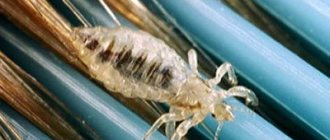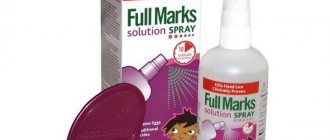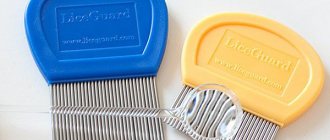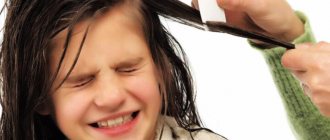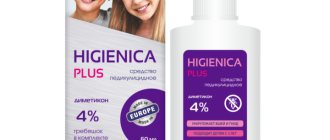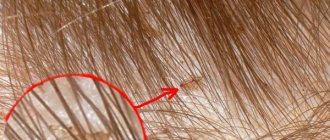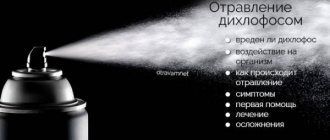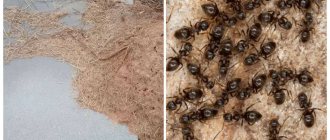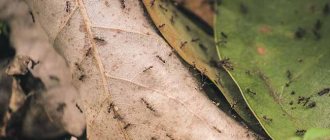Head lice. Many people think that only the moving ones are the most dangerous: larvae and adult lice. But this is not true at all! While larvae and lice can be effectively killed using various pediculicides, these techniques have little or no effect on eggs. Why eggs have such protection from chemicals and how to get rid of lice eggs for sure, whether you can kill them with electric shock, freeze them or drown them in water, we will tell you in this material.
We have selected the best combs for you: a metal comb and an advanced alternative - an electronic comb. But we will warn you about products that do not work. Some unscrupulous manufacturers, taking advantage of people's gullibility and their desire to get rid of lice as quickly as possible, simply deceive them! We will tell you about a product that has been on sale for a long time, but is completely useless. And at the end, we will share with you 7 valuable tips for combing your hair and 5 secrets on how to protect yourself from infection.
What is pediculosis
Pediculosis Pediculosis / CDC (from the Latin pediculus - louse) is an infestation of the skin and hair with lice.
Typically, Lice (pediculosis) / MSD Manuals attack by small blood-sucking insects affects areas of the body covered with hair: head lice live on the head, and pubic lice live in the genital area. However, the latter are not averse to traveling, so they are found, among other things, on the hair of the thighs, torso and face: in the beard, mustache, eyebrows.
There is another type of lice - body lice. They do not settle on the skin, but in clothing or bedding, usually near the seams. But, like the other two species, they feed on human blood. That is, they bite.
Why and where do lice come from?
The louse is a human parasite. The insect feeds on his blood and lives on his body. This applies to head and pubic lice. There is also a body louse, which only feeds on a person, but lives in clothes, bedding or other textiles next to a person in order to always have access to food.
Parasites are transmitted from person to person through contact or through the use of personal belongings. This insect cannot fly or jump, but crawls quickly. It can travel considerable distances on any surface, so it is not necessary for the heads to touch for the louse to move from its host to a new victim. Sometimes you can pick up a pest from a headrest in public transport or from a lounger in a sauna, where previous visitors left them. Lice can live outside the human body without problems for up to two days. They survive even in water, so you can catch them anywhere.
The most risky places where you can become infected with head lice are places with large concentrations of people. Children bring lice from kindergartens, schools, summer camps, and leisure centers. Adults can become infected in a hospital, sanatorium, long-distance train, airplane, prison, temporary detention center, hairdresser or swimming pool. If you visited an establishment where there were many people at the same time, and they stayed there for a considerable time and could be in close contact, then after visiting such a place you should be especially vigilant in order to detect lice in yourself in time and begin treatment.
Particular attention should be paid to children, especially during outbreaks of head lice in children's institutions. Lice are a common occurrence in kindergartens and schools. Children easily pass them on to each other. At the same time, children usually cannot tell adults that they have parasites. They do not perceive itching as a symptom of the disease. In rare cases, children do not itch their heads at all, even with a large accumulation of parasites. Therefore, parents should very carefully examine children's heads when washing, combing, and simply upon returning from kindergarten or school. After visiting a children's camp, such an inspection is required.
How to recognize pediculosis
Pediculosis/CDC lice infestations do not necessarily have symptoms. But if signs of head lice do appear, they usually look like this Head lice / Mayo Clinic.
- Severe itching. It is caused by an allergic reaction to substances found in insect saliva.
- Sensation of movement in the hair. Sometimes adult lice can be seen with the naked eye. However, this is not always the case: these insects are small, move quickly and hide from the light. In addition, they know how to camouflage themselves with hair color: for example, lice on brown-haired and brunette people look darker Pediculosis / CDC. Therefore, most often you can notice the presence of insects by a slight sensation of movement in the hair.
- Sores on the skin. Small red and inflamed dots appear at the site of the bites - due to the fact that the person scratches the itchy area furiously.
- Visible lice eggs (nits) on the hair shafts. An adult female can lay up to 8 eggs per day. Usually she attaches them at the base of the hair - at a distance of no more than 5-6 mm from the skin. Pediculosis/CDC nits are approximately 0.8 x 0.3 mm in size, oval in shape and white or yellowish in color. The easiest thing to notice is empty eggs that have already hatched into nymphs (young lice that will have to survive several molts before they become adults and can reproduce): they are larger and slide slightly down the hair, moving away from the skin.
Photo: aoo8449 / Depositphotos
See what nits look like on your hair
Close
What are nits
Nits are a type of parasite called lice eggs. It is a small capsule located in a special shell of an adhesive substance that ensures ideal fixation on the hair.
Capsules are laid by sexually mature female lice, which can lay several clutches in one day.
We recommend reading: the life cycle of head lice and nits.
What does it look like
They have a very small size. They look like small capsules, usually white and slightly transparent. The shape of the capsule is elongated. Quite often the appearance of nits can be confused with dandruff. Capsules can be noticed relatively easily, which is much easier to do on dark hair.
If this parasite is present, the hair does not look clean - it feels like it is greasy, dirty and has not been combed for a long time. The length of the bodies is about 0.7–0.8 mm long. When examining the body of the parasite through a microscope, you can notice a certain tail, which is the attachment of the parasite to the hair. And also, in addition to the fastening, there is a valve, from where a new individual will appear after some time.
How dangerous are lice?
Body lice are the primary carriers of Pediculosis/CDC diseases such as epidemic typhus, trench fever, and relapsing fever (aka relapsing fever). However, in normal life such situations are extremely rare. Firstly, this type of insect is transmitted mainly in conditions of poor hygiene and crowded conditions (for example, in military barracks, trenches) or among people with very low social status. Secondly, for the infection to spread, there must be at least one infected person.
Head lice and pubic lice do not carry dangerous diseases, either bacterial or viral. Head lice / Mayo Clinic. However, constant itching causes discomfort. Plus, by scratching the bites, you can introduce some kind of infection into the wound, which will lead to inflammation.
Symptoms
How can you tell if there are nits? Symptoms of the disease, as a rule, are invisible immediately after its appearance, since they are not very pronounced and a person simply does not consider it necessary to pay attention to them. Despite this, it is possible to detect signs of head lice in the first days of infection.
The following symptoms of infection exist:
- Constant itching that does not go away even with strong scratching of the skin.
- The presence of bites, since the entire diet consists of human blood. To prevent the bites from healing, the parasites inject a special secretion that interferes with the blood clotting process.
- Slight tingling, like a mosquito bite. The sensations of a mosquito bite and a louse bite are the same.
- The presence of white bodies in the root part of the hair.
Of the above symptoms, the most noticeable is itching. Most often, it is this that becomes the reason for contacting a medical specialist or conducting a thorough examination of the head at home.
Are there nits without lice?
Such a case is possible, but very rare. The discovery of empty nit capsules, where there are no longer living individuals, makes you think carefully about the situation. The answer to many questions is that measures to combat head lice were applied either on purpose or by luck.
There are no living specimens on the head, as they died as a result of some impact. One of the types of such effects is painting with a mixture containing hydrogen peroxide, or bleaching hair, as a result of which the peroxide destroys lice and nits.
When to go to the doctor
If you find lice on yourself or your child and are planning to start treatment (even with over-the-counter remedies), doctors from the American medical organization Mayo Clinic recommend that you still consult a therapist or pediatrician. The Head lice/Mayo Clinic reason is that parents often treat children for head lice who do not actually have a parasite infestation. The following are taken as detected nits and lice:
- dandruff;
- remnants of various hair products - hairspray, dry shampoo, gel;
- natural thickenings on some hairs;
- dirt or small debris;
- other small insects that accidentally got into the hair.
There is one more nuance. Signs of a lice infestation are similar to those of scabies. Therefore, it is better to consult a doctor to make an accurate diagnosis.
How they appear on a person’s head
The most common way head lice occurs is through close contact with an infected person , as well as wearing hats of such a person or using his comb.
Close contact for the appearance of lice and nits is those actions of an infected and healthy person in which their heads touch. For example, children often play together, after which lice immediately spread throughout the entire group of children.
Nits cannot appear out of nowhere, as they are a consequence of lice infestation, which can only be transmitted from another person. Also, even if one capsule gets on the head, which happens very rarely, the disease will not be able to develop, since there will simply be no conditions for reproduction.
Capsules appear on the hairline almost immediately after several lice get on it, as the process of reproduction begins.
You will find details on where lice come from in humans on our website.
How does a doctor diagnose head lice?
Gold standard for head lice detection, according to Head Lice/Pediatrics. Official journal of the American Academy of Pediatrics (AAP) is a wet hair test. This is how it is carried out by Head Lice/Mayo Clinic. The doctor applies conditioner or balm to the hair, and then combs it with a comb with long, fine teeth - from the skin to the very ends. This procedure helps the physician visually detect nits and live lice, if any.
Pubic lice are diagnosed by lice (pediculosis) / MSD Manuals by examining the affected areas at close range. To do this, use a Wood's lamp - a luminescent device that emits light in the ultraviolet range. Under its rays, the affected areas of the skin begin to glow, and the doctor is able to accurately examine the rash or sores. In addition, nits become better visible. An indirect way to detect pubic lice is the presence of small dark brown grains (parasite excrement) on the skin and underwear.
If you suspect pediculosis, which is caused by body lice, you need to examine clothing and bedding, especially in the area of the seams. Diagnosis is made based on symptoms and insects found.
Isn't this lice?..
The following symptoms indicate that “uninvited guests” have appeared in the hair:
- • severe itching;
- • red-blue spots on the skin;
- • sores and scratches.
Small wounds on the scalp can cause significant discomfort; in addition, due to constant itching, adults and children tend to frequently touch the disturbing areas, which can lead to infection.
In addition, lice carry a number of dangerous diseases, in particular typhus and relapsing fever. Due to inflamed wounds on the skin, secondary infections may occur: lymphadenitis (inflammation of the lymph nodes), pyoderma (the appearance of blisters filled with pus).
Therefore, when the first symptoms appear, you should make sure that you have lice. This can be done by visual inspection. It is best to arm yourself with a special comb. It has very frequent teeth with notches. The comb is usually made of metal or durable plastic, and the tips of the teeth are rounded so as not to damage the scalp when combing. Comb each strand, then clean with a napkin or cotton swab. On light-colored tissue, parasites are clearly visible.
How to get rid of lice
Treatment depends on where exactly the parasites were found.
How to get rid of lice on your head
Over-the-counter remedies are usually sufficient for this. In particular, one of the more popular Head lice/Mayo Clinic options is a pyrethrin-based shampoo, lotion, or spray. This is the name of the chemical compounds that are obtained from chrysanthemum. Pyrethrins are toxic to lice. There is also a synthetic, that is, artificial, form of pyrethrin - permethrin. It is also often used in anti-pediculosis medications.
The regimen for using such drugs is indicated in the instructions and usually looks like this:
- Rinse your hair with a solution of table vinegar (1 tablespoon per liter of warm water). It will dissolve the sticky substance that holds nits to the hair and make them easier to remove.
- Wash your hair with shampoo. Important Head Lice/Pediatrics. Official journal of the American Academy of Pediatrics (AAP) so that it does not contain conditioning agents such as silicone. Such compounds envelop each hair, attach nits to it and worsen the effect of pyrethrins.
- Dry your hair with a towel and apply an anti-pediculosis product to it. Leave for the period specified in the instructions.
- Thoroughly rinse the product from your hair. It is better to do this over the sink, rather than in the shower or bath, so that the active ingredients of the lotion or spray do not get on the skin: in some cases they can cause irritation.
- Dry your hair and comb it thoroughly with a thick comb to remove any nits found.
- Repeat the procedure after 9–10 days.
In the interval between procedures, it makes sense to comb your hair with the same thick comb once every 3-4 days to remove any remaining lice eggs from it.
If products with pyrethrins do not help, your doctor will prescribe you a prescription drug, for example, based on ivermectin or karbofos, which is more powerful, but also more toxic.
There are also traditional ways to get rid of lice. However, you should not rely too much on their effectiveness.
- Essential oils. Indeed, there is Kosta Y Mumcuoglu, Jacqueline Miller, Chen Zamir, Gary Zentner, Valery Helbin, Arieh Ingber. The in vivo pediculicidal efficacy of a natural remedy / The Israel Medical Association journal small clinical studies demonstrating that tea tree, anise, and ylang-ylang oils can destroy lice (this occurs due to the fact that the insects are blocked from accessing air). However, doctors consider the effectiveness of such products to be questionable. And they warn: essential oils can cause skin irritation.
- Vegetable and butter, Vaseline, mayonnaise. These products, in theory, act in the same way as essential oils: they block the air supply, and the lice that got caught in the oil simply suffocate. To enhance this effect, it is recommended to hide the hair in a mask of oil or Vaseline under a shower cap and leave it overnight. However, how effective this method is is not yet clear.
- Using a hair dryer. Hot air helps to destroy some of the nits by depriving them of moisture. However, it is not so dangerous for adult insects. In addition, doctors consider the speed of air flow from a conventional hair dryer to be insufficient to properly dry lice eggs.
- Kerosene, gasoline. These products are highly flammable, which means their use poses a serious risk to health and life. In addition, breathing kerosene or gasoline fumes is also dangerous.
How to get rid of pubic lice
To treat such head lice, doctors also recommend Lice (head lice) / MSD Manuals pyrethrin-based products, available in the form of shampoo, lotion or cream.
It is important for your sexual partner to undergo treatment for pubic lice to prevent re-infection.
If pubic lice have occupied the eyelashes, the situation becomes somewhat more complicated. Shampoos and lotions will not work in this case. Most likely, your therapist or dermatologist will recommend that you apply Vaseline ointment to your eyelashes, as well as treat your eyelids with special anti-pediculosis drops.
How to get rid of body lice
Because body lice live only on clothing and not on the body or hair, they are the easiest to get rid of. It is enough to replace clothes and bedding or thoroughly process them. For example, you can wash everything at a temperature of at least 65 °C. Or put them in sealed plastic bags for a couple of weeks: the lice will die without bleeding.
What to do to avoid getting lice
Lice crawl, but cannot jump or fly. Although, when combing your hair, static electricity accumulates, which can Head Lice / Pediatrics. Official journal of the American Academy of Pediatrics (AAP) push the louse out of the head at a distance of up to 1 m. But such cases are rare. Therefore, most often infection occurs through direct close contact. For example, when you touch heads or have sex with someone who has head lice.
Indirect transmission - through hats, combs, bedding - is also possible, but unlikely. Thus, in one small study, Rick Speare, Christine Cahill, Genelle Thomas. Head lice on pillows, and strategies to make a small risk even less / International journal of dermatology, scientists tried to find live lice on pillowcases on which people infected with lice slept. Insects were found on only 4% of bedding.
From all this we can derive several important rules for the prevention of head lice.
- Avoid direct close contact with strangers.
- Don't put clothes in the same pile as other people's things. It is better to hang it separately - on a hook or hanger.
- Do not share combs, combs, or hair brushes with anyone.
- Do not give your personal hat and scarf to strangers. The only exception is protective headgear required for sports. They can be used together: lice do not live on pith and plastic helmets.
- Do not lie down on sofas, beds, or pillows that a person with lice may have rested on.
Does head lice go away on its own?
If a person comes into contact with a lice carrier - he walks nearby or, for example, puts on a hat - he can pick up one parasite. This may be a sexually mature female, but she still needs a male to reproduce. If it is not there, then the disease may not develop. The insect will simply drink blood and die after some time. On average, these insects live about 40 days (more details in the article “How long do lice live without humans”). But there are few cases of infection by single individuals that do not leave offspring. More often you have to deal with the rapidly growing population of insects in your hair. Pediculosis itself does not go away even after some time.
